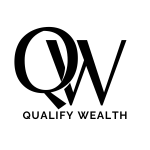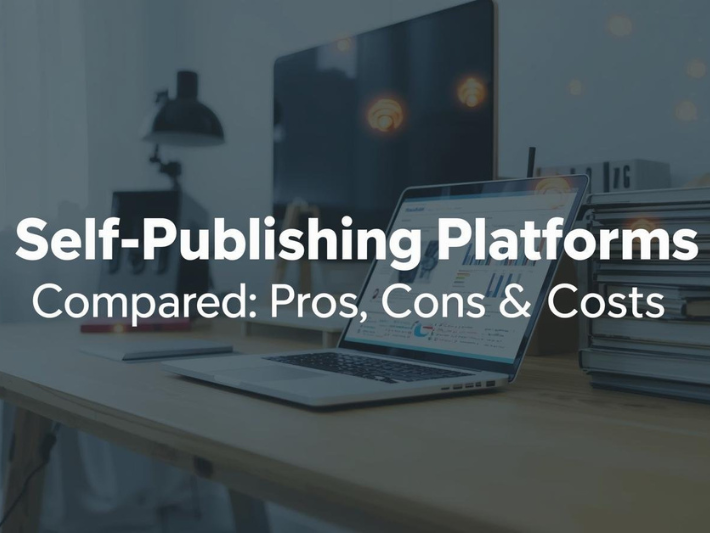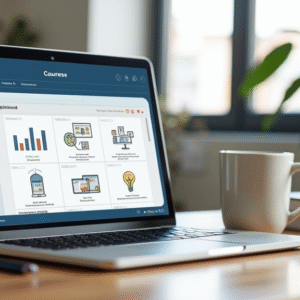Choosing where to publish your book is a big decision for any indie author. The world of self publishing platforms is growing fast, with lots of options, promises, and a mix of costs and pros and cons. Each service offers its own strengths, whether you dream of seeing your book in print, maximizing your royalties, or reaching a huge worldwide audience.
If you’re a writer looking to go independent, it really helps to understand how the biggest platforms stack up. Some offer handson tools, others stick to basic book listing, and a few are built more like an author services marketplace, where you can buy editing, design, and help with marketing. With so many choices, it’s easy to get overwhelmed or spend more than you need.
I’ve been down this road a few times, so I’ve learned the ins and outs, sometimes the hard way. Here’s a breakdown of the most popular self publishing platforms, what you’ll pay, and what makes each one worth checking out. Let’s jump in and check out your options.
TL;DR: How to Pick Between Top Selfpublishing Platforms
- Amazon KDP: Massive reach, zero upfront cost, but tough competition and strict formatting.
- IngramSpark: Best for wide print distribution; setup isn’t free and revisions cost extra.
- Draft2Digital: Simple eBook distribution to many stores, good revenue split, no upfront fees.
- Kobo Writing Life: Strong in Canada/international, easy to use, wide eBook reach.
- Apple Books for Authors: Great for iOS users, high royalties, but only eBooks.
- Author services marketplaces: Places like Reedsy or Fiverr offer addon services a la carte, ideal if you want professional editing or design but want to choose your team.
Costs range from free to about $49 per title (plus upsells and addons). Royalties and reach are your key items to watch.
Amazon KDP: The Giant of Self publishing Platforms
Amazon Kindle Direct Publishing (KDP) is the absolute heavyweight in self publishing. You can publish print-on-demand paperbacks, hardcovers, and eBooks without any upfront charge. KDP lets you reach millions of readers through both the Kindle store and Amazon’s paperback distribution. Your book shows up right beside those from traditional publishers, which is a huge plus for visibility.
Pros:
- No upfront fees
- Largest eBook and print book customer base
- Simple interface and decent customer support
- Royalties: 70% on eBooks (in most cases), 60% minus print cost for paperbacks
Cons:
- eBook pricing and format restrictions (especially for 70% royalty)
- Very crowded market, meaning discoverability can be tough
- Print quality is decent but below what some other POD services offer
- Doesn’t distribute widely beyond Amazon unless you opt for expanded distribution, which pays less
Costs:
No setup fee. You only pay print costs per order, taken automatically from your royalties, making it easy to get started if you’re on a tight budget.
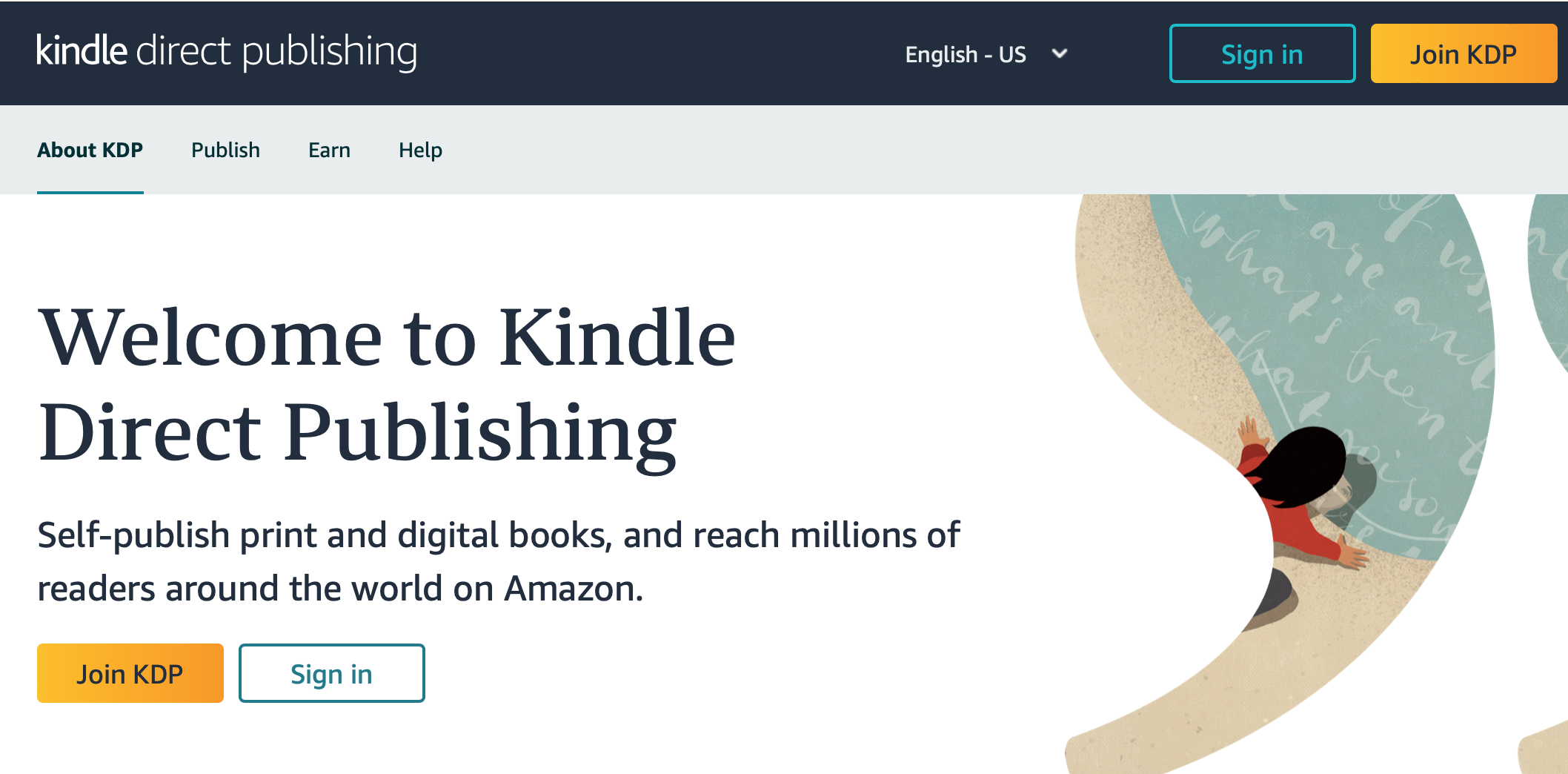
Image source: Amazon KDP
IngramSpark: Wide Print Distribution, But Watch the Fees
For wider print distribution, think libraries, bookstores, and international retailers, IngramSpark is the first choice for many. Ingram is the world’s largest wholesale distributor for books. You’ll also find eBook distribution here, but its print network is what really stands out.
Pros:
- Superior global print distribution
- Options for hardcovers, paperbacks, and color interiors
- More flexibility in trim size and paper choices than KDP
Cons:
- Setup fee: $49 per title if you publish both print and eBook (you can sometimes find free codes)
- $25 charge for file updates (after the first 60 days)
- Interface takes a little getting used to and can feel clunky compared to Amazon
- Royalty rate is lower after wholesale discounts
Costs:
$49 per title for print and eBook, $25 for later changes, plus print costs deducted per sale. If you track down coupon codes, you might avoid some upfront fees. IngramSpark’s network is hard to beat for physical book distribution, so for authors wanting to get their books into libraries and brickandmortar shops, it’s powerful.

Image source: ImgramSpark
Draft2Digital: The Handsoff Distributor for eBooks
Draft2Digital is great if you just want to publish once and have your eBook available at Barnes & Noble, Apple Books, Kobo, libraries, and several global retailers with minimal extra work. They handle formatting, conversions, and reporting in one dashboard, so you can keep tabs on sales from a single place.
Pros:
- No setup or update fees
- Excellent at handling file conversions automatically
- Wide eBook store distribution (but no Amazon Kindle unless you provide ePub and opt in for select content)
- Good author dashboard with reliable sales tracking
Cons:
- Takes 10% of retail price per sale (but only when you make a sale)
- Short on marketing tools compared to KDP
- Print is relatively new and not as feature rich as Ingram or KDP
Costs:
Free upfront. Draft2Digital takes a 10% cut of each eBook sale.
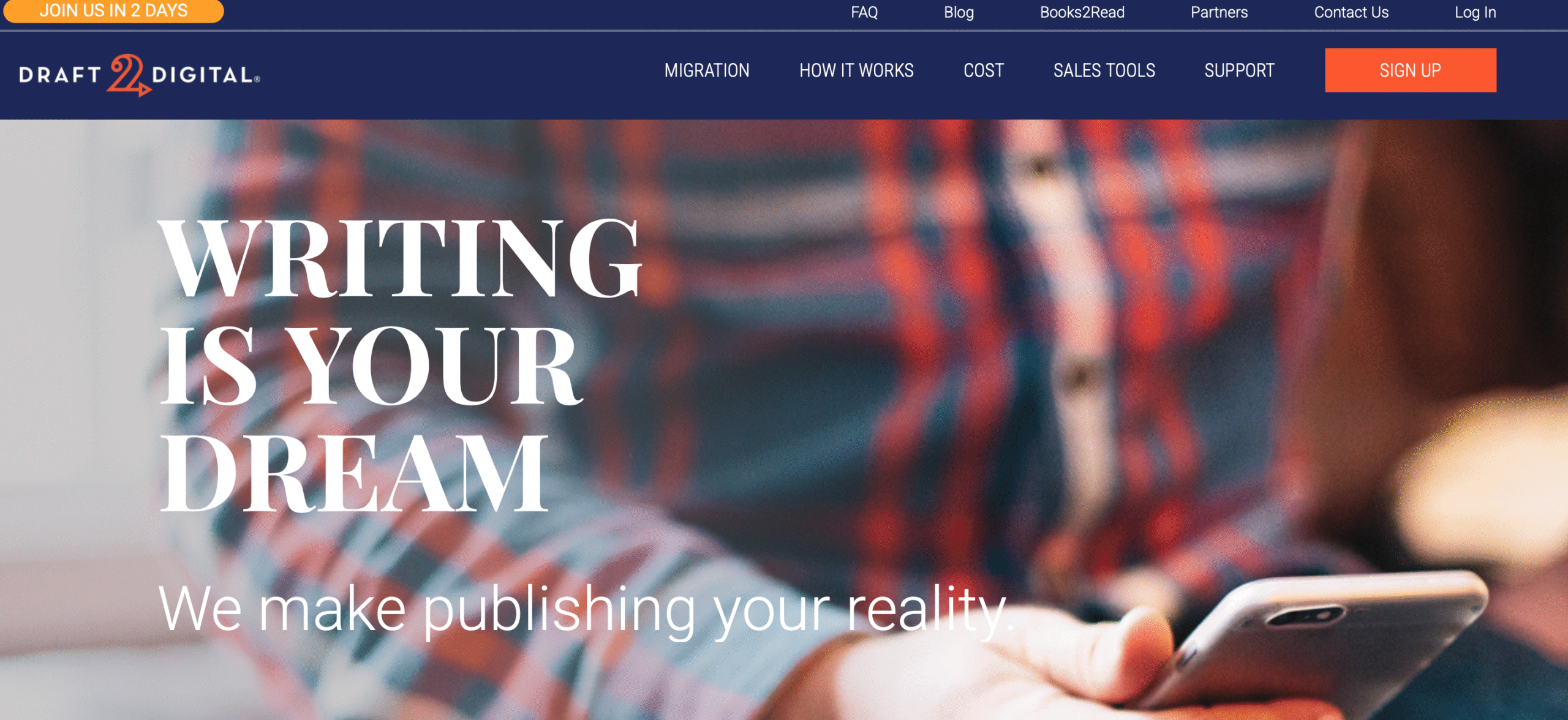
Image source: Draft2Digital
Kobo Writing Life And Apple Books for Authors: Going International
If your target readers use iPhones, iPads, or live in Canada and overseas, Kobo and Apple Books are both handy choices. They both offer nofee selfpublishing with decent reporting and wide marketplace access.
Kobo Writing Life
- Strong presence in Canada, Europe, and Australia
- Supports direct sales and library loans
- No setup cost, fast and straightforward publishing tools
- Royalties: Up to 70% for eBooks
Apple Books for Authors
- Great for all Apple readers and writers
- Direct access to the Apple Books store, which is big in the US, UK, and Australia
- No setup fees
- Royalties: 70% across all price points
- eBooks only, which limits opportunities for print authors
Both platforms can help you reach a new set of readers, and publishing directly with each ensures you keep the best royalties.
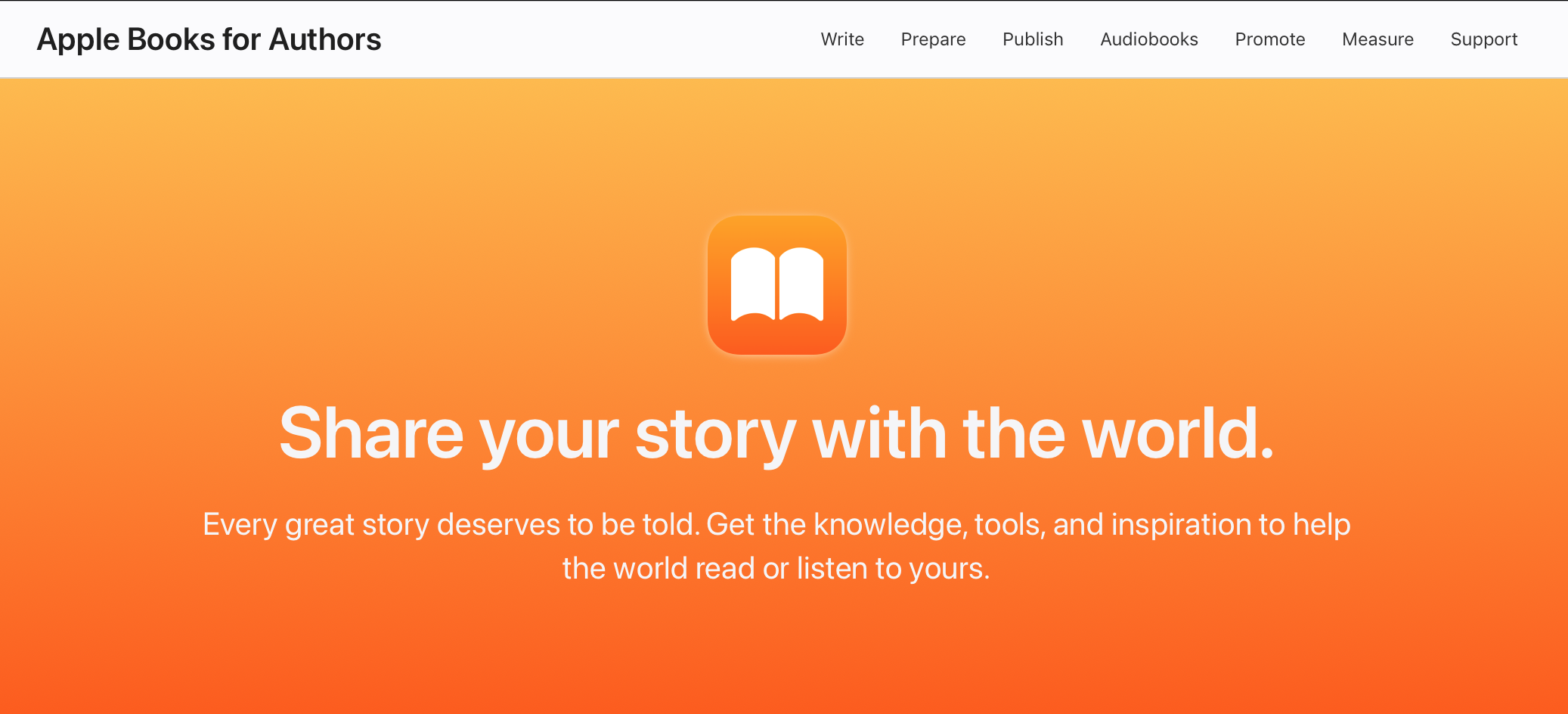
Image source: Apple Books for Authors
Author Services Marketplace: Customize Your Experience
If you’d rather build your own self publishing team, using an author services marketplace might be the way to go. Sites like Reedsy, Fiverr, and Upwork connect you with freelance editors, designers, and marketers. You pay for each piece, editing, cover design, formatting, etc., and then upload your finished files to the platform of your choice (like KDP or IngramSpark).
- Great for having full control over your book’s look and feel
- Prices can range from $50 for basic covers to $1,000+ for professional editing packages
- You can shop around, read freelancer reviews, and choose only the services you need
These marketplaces are handy if you want a personalized approach without being locked into one company’s package deal.
Summary: Pros, Cons, & Costs Compared
- Amazon KDP: Quick, free, and straightforward, but expect stiff competition and limited print quality.
- IngramSpark: Best print reach and more book options, but costlier and a bit less user friendly.
- Draft2Digital: Effortless eBook distribution, streamlined process, with a small cut from each sale.
- Kobo/Apple: Good for global reach, free to use, and simple interfaces.
- Author services marketplace: Complete control, but you pay for each service up front.
Choosing the right self publishing platform depends on your goals, your budget, and where you want your book to be seen. Mixing and matching platforms (for example, KDP for Amazon, Ingram for bookstores, D2D for everyone else) is actually really common. It helps broaden your reach while keeping costs under control and tailoring your publishing path to your exact needs.
Looking for a training platform that actually works?
I’ve put together a full walkthrough of the affiliate marketing training that helped me build everything I have today. It’s practical, beginner-friendly, and you can try it out for free to see if it suits you.
Take a look at my honest review and see if it’s the right fit for you.
Turn Your Passion into Earnings
Get the Tools, Training and Support you need. All in One Place
Join a a Vibrant and Global Community of
Marketers and Entrepreneurs from Around the World
FAQ: Self publishing Platforms and Author Services Marketplace
What’s the best self publishing platform for new authors?
Most new authors start with Amazon KDP because it’s free and offers access to a huge audience. If bookstores and libraries matter to you, pairing with IngramSpark is a solid move.
Are author services marketplaces legit?
Sites like Reedsy, Fiverr, and Upwork are widely used and reliable for finding freelance help. Just check freelancer reviews before hiring and clarify exactly what deliverables you expect. Staying sharp during this process can help you avoid issues.
Can I use multiple self publishing platforms at once?
Yes, as long as you don’t sign up for Amazon’s KDP Select (which asks for eBook exclusivity), you can list your book on as many platforms as you want. Many authors go this route to reach the widest audience.
How much does self publishing cost in total?
It can be totally free (if you use only Amazon KDP and do everything yourself) or range from $50 to $2,000+ depending on how much editorial, design, or marketing help you pay for up front. Your costs will depend on the level of support you want to pay for from freelancers or service providers.
Final Thoughts
Self publishing gives writers a bunch of options and freedom, but every platform comes with its own tradeoffs. The right answer depends on what kind of help you need, your spending comfort zone, and where you want your book to show up on shelves and screens.
Researching your options helps authors make smart choices, and getting the combination of platforms just right can be a real game changer for your book’s success. Getting your book out there is a big step. With so many reliable self publishing platforms and solid author services marketplaces, there’s never been a better time to publish independently. Whether you’re looking to reach millions on Amazon, break into bookstores, or customize your publishing team, there’s a tailored path available for just about every indie author out there.
Let’s make it happen!
You may like “Self-Publishing On Amazon: A Comprehensive Guide“
